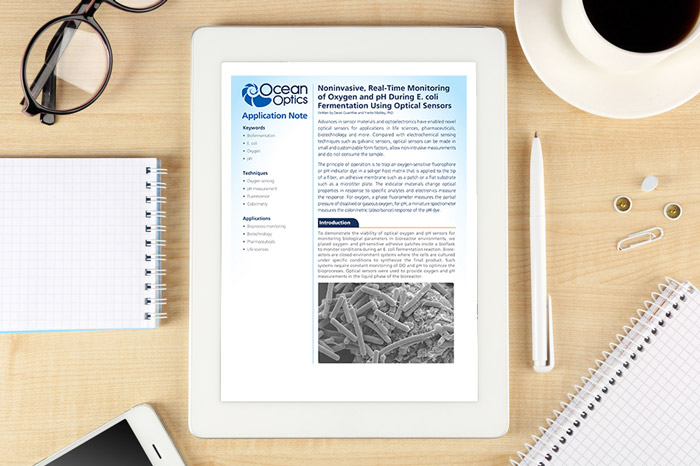Application note: Noninvasive, real-time monitoring of oxygen and pH during E. coli fermentation using optical sensors
Posted: 21 December 2016 | Ocean Optics | 1 comment
In this application note, Ocean Optics discusses the advances in sensor materials and how optoelectronics have enabled novel optical sensors for applications in life sciences, pharmaceuticals, biotechnology and more…
Advances in sensor materials and optoelectronics have enabled novel optical sensors for applications in life sciences, pharmaceuticals, biotechnology and more.
Compared with electrochemical sensing techniques such as galvanic sensors, optical sensors can be made in small and customizable form factors, allow non-intrusive measurements and do not consume the sample.
The principle of operation is to trap an oxygen-sensitive fluorophore or pH indicator dye in a sol-gel host matrix that is applied to the tip of a fiber, an adhesive membrane such as a patch or a flat substrate such as a microtiter plate. The indicator materials change optical properties in response to specific analytes and electronics measure the response. For oxygen, a phase fluorometer measures the partial pressure of dissolved or gaseous oxygen; for pH, a miniature spectrometer measures the colorimetric (absorbance) response of the pH dye.






Congratulations for taking care of top pharma topic